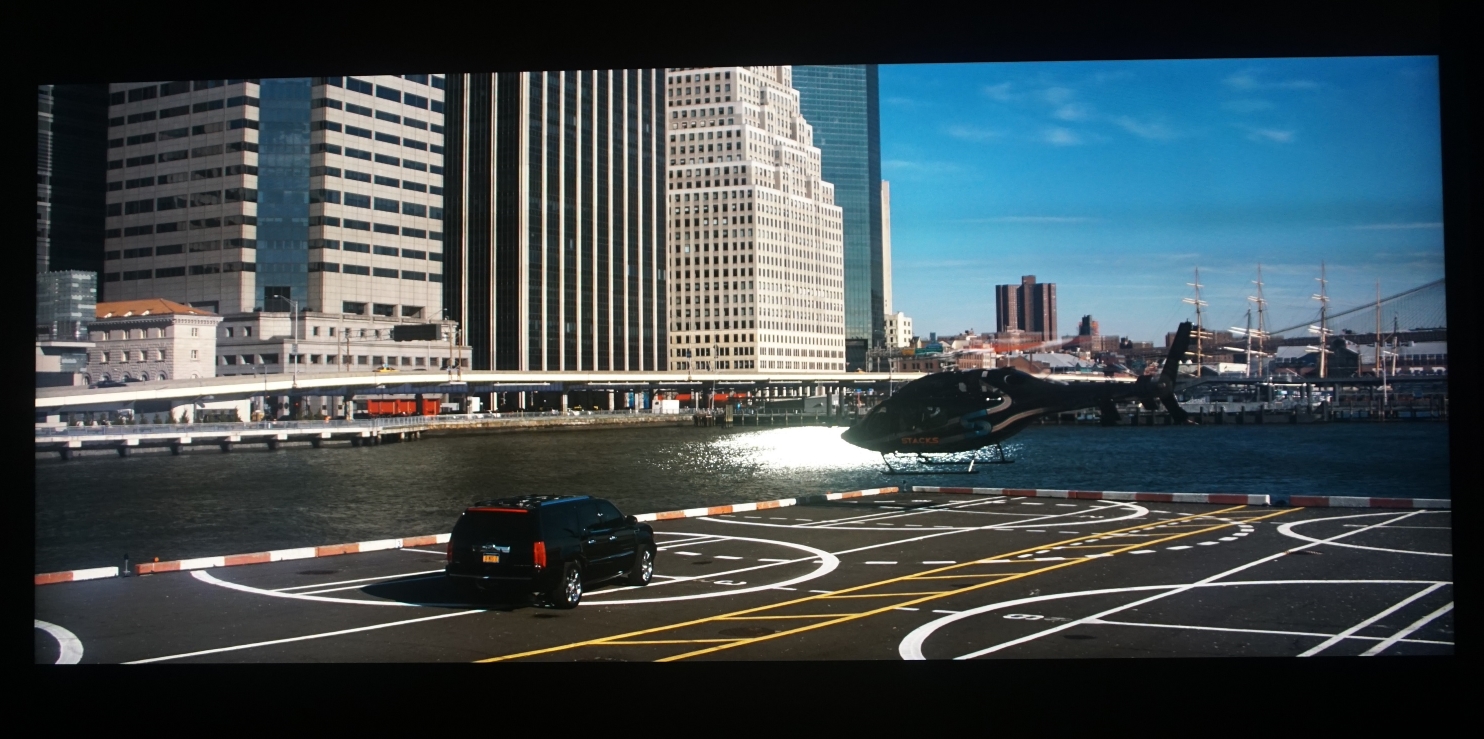Experimental Sony Backlight Could Rival OLED
Sony is experimenting with a technology known as Backlight Master Drive, which, when perfected, could provide OLED-like contrast and colors for less.
LAS VEGAS – OLED's incredibly high levels of contrast are matched only by its incredibly high price. Sony wants to provide OLED-quality screens for consumer-level TVS, but hopes to sidestep the difficult manufacturing processes and prohibitive price tags endemic to the medium. As such, the company is experimenting with a technology known as Backlight Master Drive, which, when perfected, could provide OLED levels of contrast and color quality on much cheaper LED/LCD screens.

Sony gave me a private demonstration of the technology at CES 2016, and the early results look extremely promising. To test the Backlight Master Drive, Sony brought me into an impromptu black box theater on the show floor and sat me in front of three TVs: a competitor's OLED TV, a Sony BVM-X300 reference monitor (an OLED professional monitor used for mastering feature films) and an early prototype Sony TV with a Backlight Master Drive installed.
MORE: What's Next for TV: 4K Goes Mainstream, But Here Comes HDR
To evaluate the quality on the three TVs, we watched three clips: a collection of short videos highlighting Las Vegas landmarks, a helicopter ride over New York City from the 2015 version of Annie and the confrontation between Spider-Man and Electro from The Amazing Spider-Man 2. In each case, the Backlight Master Drive looked much more vivid and detailed than the OLED screen, and almost as refined as the reference monitor.
In simple terms, the Backlight Master Drive works by controlling the amount of light that bleeds from LED displays in very fine degrees. By localizing portions of the screen that need to be bright or dark and adjusting them accordingly, the whole picture appears more colorful and full of contrast as a result. Many UHD TVs on the market already do something like this via localized dimming, but the Backlight Master Drive could theoretically exercise much more nuanced control over Sony screens.
For right now, the Backlight Master Drive is only a proof-of-concept experiment. Sony has no immediate plans to incorporate the technology into its TVs, or take a stab at how much doing so might cost. Company representatives explained that it's investigating the technology as one possible way to offer consumers something on the level of OLED screens, and push the boundaries of what LCD screens can accomplish. If Sony can make affordable OLED ideas, it's still open to that; if another LCD technology supersedes the Backlight Master Drive, Sony is open to that, as well.
For now, if you want the very best in black and color balance, you'll probably have to dish out the extra money for an OLED TV. If you can wait a few years, though, the landscape could change.
Get instant access to breaking news, the hottest reviews, great deals and helpful tips.

Marshall Honorof was a senior editor for Tom's Guide, overseeing the site's coverage of gaming hardware and software. He comes from a science writing background, having studied paleomammalogy, biological anthropology, and the history of science and technology. After hours, you can find him practicing taekwondo or doing deep dives on classic sci-fi.
-
Dave_28 OLED blows for so many reasons I simply do not understand the love affair with it. First the only good OLEDs are those you highlighted right there in your piece the 30 thousand dollar Professional TriMaster Monitors. The garbage LG has out there has ridiculous Burn In issues (that they highlight in the freaking manual and don't warranty) pretty poor HDR performance due to inability to get anywhere near as bright as a full array LED, plasma like noise when watching Blu Ray for sure, and a stupid price tag. This love affair with the blackest of the black is ridiculous when top end LEDs offer extremely inky blacks for nearly half the cost. Plasma is no different than OLED in terms of black and how did that fair? With HDR being such a big deal and requiring these immense contrast levels and peak brightness (I mean hell Dolby is talking about 4000 nits and higher) why are we all in on OLED which maxes out at 800 nits and even then you are pretty much cutting the life span of the TV in half because the shelf life of those pixels are rated at eco settings at about half the brightness. OLED is not the future. OLED is for people that can afford to replace their TV every three our four years.Reply -
ssddx unless sony is experimenting with grid array backlighting (or similar technology capable of the same effect) on the level of individual pixels - it would not be correct to say it has the same contrast. while this would certainly be an interesting idea, given current prices of high density grid array units, the prices are likely going to be pretty steep.Reply
oled, like plama provides its own light output at the pixel level. lcd which does not create its own light requires a backlight to work. while lcd is a cheap technology for the masses it has always struggled with contrast since its limiting factor is always backlighting.
while completely true that oled has some major pitfalls you might want to remember that most technologies started off with similar problems which improved as the technology evolved. you might recall if you are old enough that early lcd screens had horrible ghosting, lag and burn in issues and people were all on the crt bandwagon saying how it was superior. where is crt now? oled certainly has some promise if it can be improved but this is not to say it is the only good solution.
interesting read but i'll reserve judgement until actual testing and more details about the technology surface. manufacturers have a bad habit of making their product seem better than it really is with PR.
